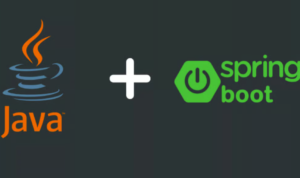Title: Django and Vue.js: Creating Interactive User Interfaces
Introduction:
Combining Django, a robust backend framework, with Vue.js, a progressive JavaScript framework for building user interfaces, enables developers to create interactive and dynamic web applications. In this article, we will explore the process of integrating Django with Vue.js to create engaging and responsive user interfaces.
- Understanding the Django-Vue.js Architecture:
- Introduction to the Django-Vue.js architecture and its benefits
- Overview of the roles of Django as the backend and Vue.js as the frontend
- Explaining the data flow and communication between Django and Vue.js components
- Setting Up the Development Environment:
- Installing Django and setting up a new Django project
- Creating a Vue.js application using tools like Vue CLI
- Configuring the Django project and Vue.js application to work together
- Creating RESTful APIs in Django:
- Implementing Django REST Framework for building APIs
- Defining API endpoints for data retrieval and manipulation
- Serializing and deserializing data between Django and Vue.js components
- Integrating Vue.js in Django Templates:
- Adding Vue.js to Django templates and pages
- Configuring Vue.js components within Django templates
- Passing data from Django views to Vue.js components
- Building Interactive Vue.js Components:
- Creating Vue.js components for dynamic rendering and interactivity
- Managing component state and data binding in Vue.js
- Implementing event handling and user interactions in Vue.js components
- Consuming APIs in Vue.js:
- Fetching data from Django APIs using JavaScript’s fetch or Axios
- Handling API responses and error cases in Vue.js components
- Updating and synchronizing data between Django and Vue.js components
- Routing and Navigation in Vue.js:
- Implementing client-side routing using Vue Router
- Configuring routes for different views and components in the Vue.js application
- Navigating between views and passing parameters using Vue Router
- Styling Vue.js Components:
- Utilizing CSS frameworks or UI libraries for styling Vue.js components
- Applying CSS classes and styles dynamically in Vue.js components
- Implementing custom styling and theming options in Vue.js
- Handling Authentication and Authorization:
- Integrating authentication mechanisms like JWT or session-based authentication
- Managing user sessions and authorization in Vue.js components
- Protecting routes and restricting access based on user roles
- Real-Time Functionality and Vue.js:
- Integrating real-time features using libraries like Pusher or WebSocket
- Implementing real-time notifications or live updates in Vue.js components
- Synchronizing real-time data updates between Django and Vue.js
- Deployment and Production Considerations:
- Preparing the Django backend and Vue.js frontend for deployment
- Configuring production settings and environment variables
- Deploying the Django-Vue.js application to a hosting platform or server
Conclusion:
Integrating Vue.js with Django allows developers to create dynamic and interactive user interfaces in their web applications. By following the steps and best practices outlined in this article, you can seamlessly incorporate Vue.js into your Django projects, providing a smooth and engaging user experience. Whether you’re building a simple web application or a complex single-page application, the combination of Django and Vue.js offers a powerful toolset for creating interactive user interfaces.




